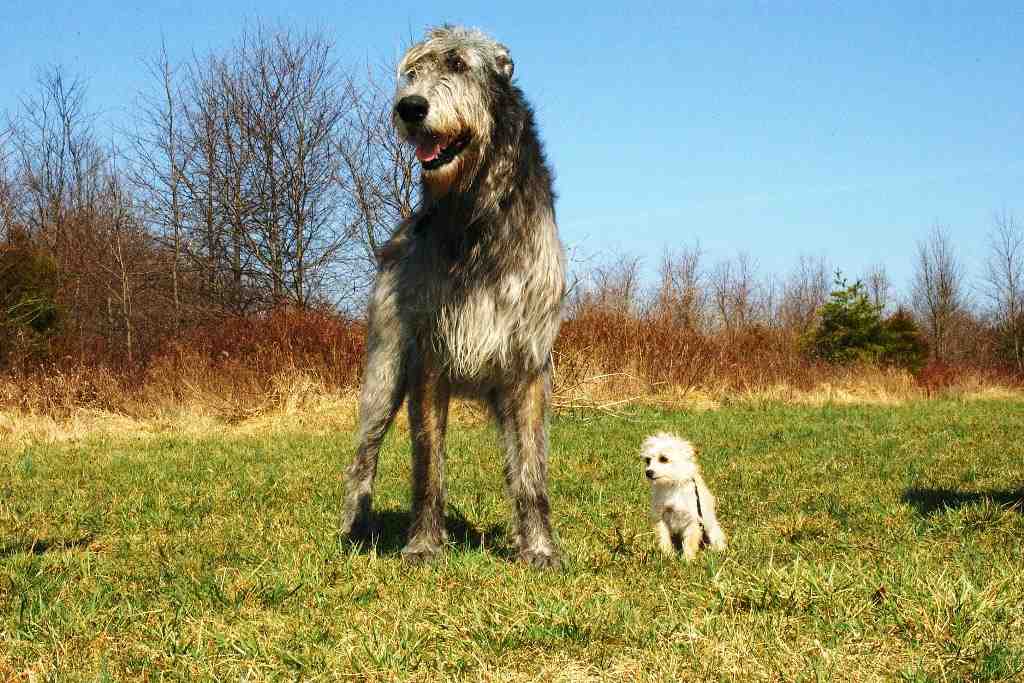The origins of the Maltese dog breed are not well known. What is known precisely is that it is a very ancient dog and that its origins lie in the Mediterranean basin. The oldest certain evidence of its existence is a depiction of it on a Greek, Athenian amphora, dated around 500 BC.
There are also different currents of thought regarding its name, one of which is that it does not derive from the island of Malta, as is often believed, but from the Semitic word ‘malat’, the meaning of which is port. This is because in ancient times these dogs were used in ports, where they hunted rats. Another hypothesis is that it comes from the city of Melina, today Mdina (founded by the Phoenicians in 700 BC in Malta). Or again from two islands: one near Sicily and another in Dalmatia, which the Romans called Melita like Malta, and today known as Meleda.
In ancient Rome they were very common in the homes of Roman nobles, and were adored by women for their beauty and intelligence. The Maltese reached the height of its popularity during the reign of Henry VIII. in England, where it was widespread. In more recent times, we remember Giuseppe Verdi, England’s Queen Victoria and the French queens Marie Antoinette and Josephine Bonaparte who had chosen the Maltese as their pet dog.
The Maltese contributed to the formation of many breeds, such as the Bichon, the Bolognese, the Bichon a poil frisè, the Bichon havanais, the Coton de Tulear and even the Yorkshire Terrier in the 19th century.
Character of the Maltese dog breed
The Maltese is the classic companion dog, which loves to play a lot; it is lively, full of joy and cheerfulness. It is sociable with everyone without limits, it is especially attached to its owner, but also to all family members. He cheers up his home and family with his mere presence. Furthermore, it has a strong and courageous character, and is also loyal, docile, attentive and obedient. He is a child-friendly dog, with whom he shows great patience and playfulness.
It is also a very alert dog, barking in the presence of people it does not know who are entering the house. It can be described as an excellent watchdog, which perceives even the slightest noise. It can therefore be said that the Maltese is suitable for everyone, whether young, old, athletic or sedentary. It loves to run, but it also loves to stay warm, on a couch or in bed. It also loves to be cuddled. It cannot stand loneliness, and also gets along well with other animals in the house.
Its training is very simple and therefore the Maltese is also suitable for those who are not familiar with dogs. It easily learns exercises and habits without forgetting them. He is also a very sensitive dog and for this reason any excessive severity with him should be avoided. If he feels he has been wronged, he takes offence. One is inclined to spoil this dog, which softens with its pleading looks, so one should not make exceptions on prohibitions, as done once, then it becomes forever.
Appearance of the Maltese dog breed
The Maltese is a small dog, the male at withers ranges from 21 to 25 centimetres and weighs between 3 and 4-5 kilograms, the female usually a little less. Its constitution is strong and robust, although given its size it seems rather frail. Its bearing is noble, proud and very elegant. Its body gives the impression of being narrow and long, its legs are short, its tail is curled and carried on its rump.
The head is proportionate with a flat and rather broad skull, the muzzle is shorter than the skull and is covered with long hairs. The eyes are rounded with a lively expression and usually dark in colour. The truffle is black and the ears are in the shape of a triangle. attached high and folded forward.
Its particularity is its coat. In fact, the Maltese is famous for its white, elegant coat. Its coat is silky, thick and very long and covers the entire body. The colour is entirely white, although specimens with ivory tones can sometimes be found. Keeping the Maltese with a long coat really means that grooming is demanding. Some people prefer to have their dog sheared to make it easier to keep the coat.
Care and health of the Maltese dog breed
For this dog, there are no particular health problems typical of the breed, but like all small dogs, it is prone to luxations of the kneecap, for which the best precaution is to avoid being overweight and to ensure that the dog gets regular exercise. This breed is also predisposed to diabetes and problems with the tear ducts. For this reason it is important to keep the eyes free and clean, preventing them from becoming irritated by coming into contact with hair. It is also predisposed to certain dermatological diseases such as atopic dermatitis and skin infections.
His diet must be balanced and adapted to his lifestyle. The life expectancy of the Maltese is rather high, it is around 15-16 years, but there are many individuals who easily reach 18 years.
The real commitment, if one decides to leave the coat long, is precisely that of looking after it. In fact, it must be brushed every day, otherwise it tends to become matted and even knotted. You must also schedule at least a couple of baths a month with a mild shampoo and conditioner at the second wash.
It absolutely cannot stand the cold, so it is advisable to cover it when you take it outside in winter.

